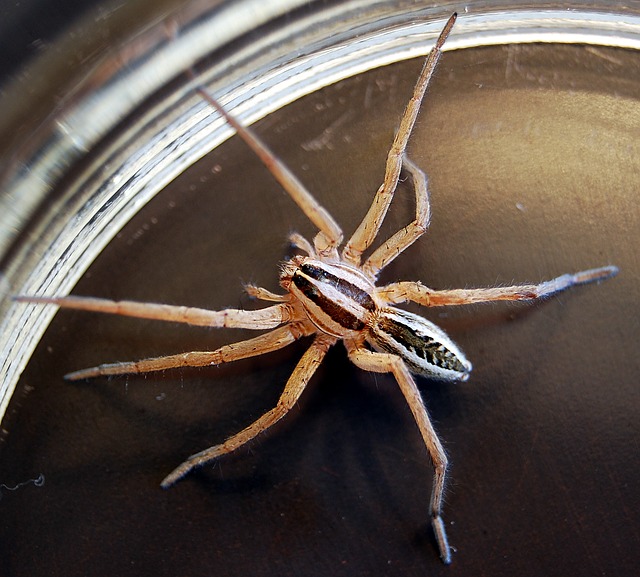Many of us as children loved the novel, Charlotte’s Web. We laughed, we cried, and we loved a spider. So what changed? Why as adults do many of us now fear our resident Charlottes? According to Texas Parks & Wildlife, there are almost 900 species of spiders in Texas, but only 2 groups are considered poisonous to humans (brown recluse and black widow), and there is a strong case for spider conservation. On an individual property owner level, spiders eat pesky insects such as roaches, mosquitoes, flies, earwigs, and clothes moths. On a much more global scale, as the primary controllers of insects, without spiders our crops would be consumed by pests and they are “particularly crucial in organic farming, which relies heavily on biological pest control.” Thanks, Charlotte!
If you’re still not feeling the spider love as visions of brown recluses and black widows dance in your head, let’s briefly discuss a few common spiders in Texas that are part of the approximately 99.8% of spiders that are not poisonous to humans.
 Black and Yellow Garden Spider
Black and Yellow Garden Spider
We have seen an abundance of these this year. Identified not only by the female’s large size and distinctive yellow markings, this “orb weaving” (spins in a circle) spider may also create a heavy zig-zag pattern in the middle of the web which is why they’re also known as the “writing spider.” These spiders feed on insects including aphids, flies, mosquitoes, wasps, and grasshoppers that get caught in their web. Anecdotally, like us you may have found that they seem to be attracted to inconvenient locations around the house for spinning their webs – attached to the a/c unit, across the back door – but they do help keep the mosquitoes in check, so we adapt.
 Wolf Spider
Wolf Spider
Most anyone in Texas on Facebook has seen an “Ack! What is this spider? Is it a brown recluse?!” type post from a friend. In more cases than not, it seems, the subject of distress is not a brown recluse, but, rather, a wolf spider. Despite the frequent confusion, they actually look quite different thanks to a design of gray, brown, and black on the wolf spider’s back. Unlike many other spiders that passively wait on their web for capturing prey, the wolf spider is a hunter, like its namesake. It tends to be nocturnal in its hunting efforts and, as we learned in this interesting tidbit from Common Spiders of North America, when a wolf spider wanders it lays down a silk dragline. When a male spider encounters the line of female, he may follow it to find her.
 Tarantula
Tarantula
As so eloquently put in “Tarantula!” by Dale Weisman: “Despite their fearsome looks, tarantulas are gentle giants, reclusive by nature, harmless to humans and an essential part of our ecosystem.” While they might not be spotted as frequently as garden spiders or wolf spiders, these gentle giants are relatively common in the wild in Texas. Female tarantulas can live up to 30 years, males up to 7, and while they do not spin webs to catch their prey (crickets, June beetles, ground beetles, grasshoppers, cicadas, and caterpillars), they do spin silk to line or create a burrow and possibly even to act as “tripwire” near the entrance to a burrow to alert when prey is near.
Now, about those other two…
Black widows and brown recluses play an equally important role in our ecosystem but, as they are poisonous to humans and can even be deadly, it’s important to know what they look like so we can all safely steer clear and let them do their pest-controlling, ecosystem thing.
 Black Widow
Black Widow
As a general rule, female black widows are about 1.5 inches long with shiny black bodies and a red hourglass-shaped marking, although this marking can range in color (more of an orange-yellow) and size (more of a dot). Males are about half the size of females, lighter in color, with red or pink spots on their back.
 Brown Recluse
Brown Recluse
As indicated by its name, the brown recluse is shy and not naturally aggressive. The spider is light brown with slender legs. Its “dark violin-shaped marking on the back of the front portion of the body, and the semicircular, paired arrangement of six eyes,” help distinguish it from similar species.
Spider Rescue
A story that became an “internet sensation” recently was about a huntsman spider in Australia, a type of spider often described as the “size of a dinner plate.” The giant spider was taken in by Barnyard Betty’s Rescue group before it could be killed and released to live on their animal sanctuary farm. They named the spider Charlotte and said the following about her – something that could be said about most spiders:
“She was a beautiful, calm spider, not aggressive in any way and like most spiders, she just wanted to go about her business eating bugs and living in peace. She didn’t or doesn’t need to be killed! Poor spiders are so misunderstood!”
For more about spider conservation, check out this Washington Post story. And for more about even more spiders in Texas, visit spiders.us.









